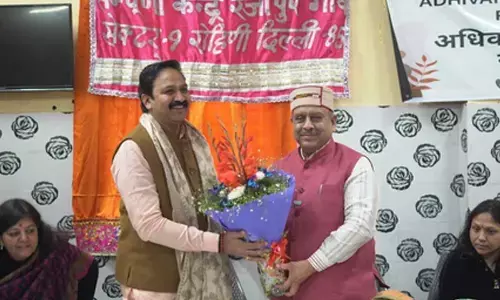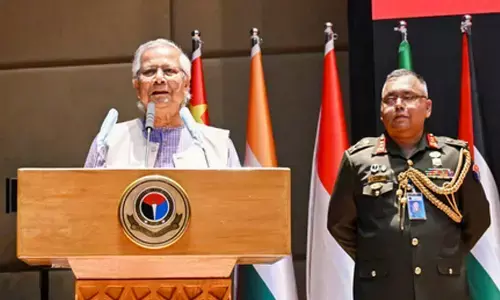The unpalatable reality of a food surplus nation

Prime Minister Narendra Modi last week made a reiteration of India’s exalted state in terms of food sufficiency, which at once cheered the Indians as well as caused a little bit dismay, too, given the present conditions and pressures on family budgets. India hosted the 32nd International Conference of Agricultural Economists (ICAE) after a gap of 66 years. The conference deliberated on fostering international collaboration in the science of agricultural economics in analysing the economic and social conditions affecting food, agriculture, the environment and rural areas. It’s interesting to note the transformation of Indian agriculture sector since the 1960s when it faced food shortages, and a famine, too, in 1964. Amidst those conditions, the country hosted the first ICAE meet in August 1958 in Mysore, which helped disseminate sound global practices to the Indian scientific community and policymakers.
It is history how India overcame those difficult conditions of starvation and migration, thanks to Green Revolution. The then Lal Bahadur Shastri government not only did it place the country on the right track, but it also fast-tracked the transformation. India came a long way from its abject dependency on wheat imports from the United States to feed its poor population. “Today, India is a food surplus country,” said a proud PM Modi said, listing the country’s significant milestones to become a leading producer of milk, pulses and spices in the world. The country is now the second-largest producer of food grains, fruits, vegetables, cotton, sugar and tea.
The Union Budget 2024-25 proposals also seek to build upon this momentum further. It is laying a big thrust on sustainable and climate-resilient farming, which is the need of the hour. With a strong eco system of scientific research in the field and a wealth of experience behind it, the country is now seeking to provide solutions to global food and nutritional security. According to the Global Report on Food Crises (GRFC) 2024, over 281.6 million people in 59 countries and territories faced high levels of acute food insecurity in 2023. India can share its good farming practices and sound policies and programmes.
However, a dichotomy exists in the case of India, which was aptly expressed by Atal Bihari Vajpayee when he was the Prime Minister. “We have sufficient stock of foodgrains. No one need go hungry in this country. Nevertheless, it is true that many millions of our countrymen still go hungry to bed every night. Malnourishment, especially among women and children, is widespread. We are determined to change this situation...” he said once.
India cannot gloat on its agriculture production surplus. It is depressing that it has persistently a high rate of malnutrition. Around one-third of the world’s malnourished children are Indian. Global Hunger Index (GHI)-2023 considers India’s score of 28.7 as serious, and its child wasting rate as the highest globally. Its other findings are equally disturbing.
Food inflation is still a major problem in the country. Governments are in denial particularly with four state elections scheduled this year. In June 2024, the food inflation was around 8.7% year-on-year. Vegetable inflation soared 29.3 per cent in June, up from 27.4 per cent in May. At a time incomes are getting stagnant and formal jobs growth not pacing well, this puts enormous strain on lower-income households.
The governments must wake up to ignoble realities of their policies and programmes, address supply side constraints, revamp PDS, involve NGOs etc., not only to sustain food sufficiency, but also to achieve nutritional security.They should also right away start addressing the root causes of poverty and inequality that can lead to malnutrition.


















